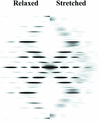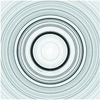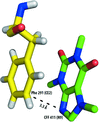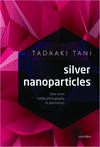issue contents
June 2016 issue

Cover illustration: A schematic of the experimental setup used to map the lattice bending produced by thermal strain relaxation in heteroepitaxial Ge microcrystals grown on high aspect ratio Si pillars. Courtesy of M. Meduna et al. [J. Appl. Cryst. (2016), 49, 976-986].
research papers
Open  access
access
 access
accessThis work focuses on the comparison of Mo Kα1 and Cu Kα1 radiations for the Rietveld quantitative phase analysis of challenging crystalline mixtures including amorphous content determination. The quantifications have been carried out by using calibration curves with increasing amounts of a given phase. Mo Kα1 patterns were found to yield slightly more accurate analyses than those derived from Cu Kα1 radiation.
This article demonstrates how neutron imaging can be performed using a conventional small-angle neutron scattering instrument.
Open  access
access
 access
accessThe unique possibilities enabled by neutron imaging for in situ remote diagnostics of microstructural characteristics during crystal growth are demonstrated, even when the materials and surrounding structures are opaque to other more conventional interrogation techniques. Neutron radiography is implemented to image remotely the uniformity of elemental distribution (e.g. dopant concentration) during crystal growth, the location of the liquid/solid interface and the presence of macroscopic crystal defects (e.g. cracks), all with a temporal resolution of 5–7 s.
A convenient data structure for the nearest-neighbor problem is discussed.
This work suggests a method for quantifying inhomogeneity of crystal structure at the nanoscale using high-resolution transmission electron microscopy. The method can measure the lattice parameters with picometric accuracy and a spatial resolution of a few to tens of nanometres without requiring aberration correction or posing any strict requirements on the sample.
Open  access
access
 access
accessThe structure of nanocrystalline calcium silicates hydrates (C–S–H) having Ca/Si ratios ranging between 0.57 ± 0.05 and 1.47 ± 0.04 was studied. All samples are nanocrystalline and defective tobermorite. An increase of the Ca/Si ratio resulting from omission of bridging Si in the Si chains and incorporation of interlayer Ca was observed.
A theoretical formulation for the diffraction from nonuniformly strained helical molecular assemblies is presented. The predictions of this theory are discussed in the context of double-stranded DNA and actin filaments in the presence and absence of nonuniform strains.
A general high-accuracy method for detecting and distinguishing elastic and plastic relaxation in epitaxial layers grown on patterned substrates is applied to a Group III–nitride system. The method is based on X-ray multiple diffraction.
Open  access
access
 access
accessAn apparatus for the optimization of crystal growth using precise temperature control and dialysis combined with real-time visualization has been developed.
This paper reports extensive testing of the Bayesian procedure for correction of systematic errors in Rietveld refinements. This testing has been performed using data collected for one sample using four X-ray and neutron diffractometers.
This study presents a series of grazing-incidence small-angle X-ray scattering experiments on polymer line gratings, together with a quantitative analysis and comparison with the real-space structure probed by atomic force microscopy. The results provide a detailed characterization of the average profile and estimates of line-edge roughness.
Two-dimensional small-angle X-ray scattering measurements were performed on highly oriented pyrolytic graphite. The observed radial streak patterns are discussed in the context of double Bragg scattering.
The nanostructure of 180° ferroelectric stripe domains is analysed by diffuse X-ray scattering. The domain period, period disorder, polarization-induced strain and wall roughness are quantitatively determined.
The density distribution is estimated from small-angle scattering data from symmetrical objects without using the distance distribution function as an explicit intermediate.
A detailed structural investigation of (Na0.5Bi0.5TiO3)(1−x)(BaZrO3)x (x = 0.00, 0.01, 0.03, 0.05 and 0.07) was carried out as a function of composition using Rietveld analysis of powder X-ray diffraction data.
Buried seeding is developed to strengthen the thermal stability of YBa2Cu3O7−δ (YBCO) films, leading to an enhancement of endurable maximum processing temperature of over 30 K in low supersaturation. Furthermore, the buried-seeding mode was successfully applied in growing single crystals of other REBCO (RE = Nd, Sm, Gd) oxides.
A method for analyzing radiation damage experiments in biological small-angle X-ray scattering is presented. This method allows direct comparison between results obtained at different beamlines and by different experimenters.
A low- to high-temperature neutron diffraction study of some (KxNa1−x)NbO3-based ceramics has been carried out. The structure of these ceramic compositions has been determined using Rietveld refinement.
By the combination of small-angle X-ray scattering with tomographic techniques, the spatially varying preferred orientation of micrometre-sized talc particles embedded in injection-moulded isotactic polypropylene has been retrieved nondestructively.
On the basis of the film structure of a Pt/AlN multilayer film which exhibits a superlattice peak after annealing, a disc-shaped nanocrystal model is proposed for simulating the diffraction profile from a one-dimensional superlattice, and the effects of the in-plane crystal size and the orientation distribution on the profile are discussed.
Download citation


Download citation


In spite of the low absolute values of the resonant contribution at high energy, accurate measurements of the Bragg intensities up to high Q values are capable of providing data sufficient for absolute structure determination.
Open  access
access
 access
accessThe nuclear fuel candidate U–8 wt%Mo has been investigated by means of neutron and hard X-ray diffraction, revealing the isothermal transformation kinetics of the high-temperature γ-UMo phase into its thermal equilibrium microstructures.
Open  access
access
 access
accessA method is given for converting slit-smeared azimuthally asymmetric data collected on a double-crystal diffractometer for concatenation with the usual pinhole-geometry small-angle neuton scattering data.
Open  access
access
 access
accessThis article reports the incorporation of a fast continuous grid scan with both still and oscillation images into the Swiss Light Source macromolecular crystallography beamlines and its application in visualization of protein crystals with scanning transmission X-ray microscopy.
Open  access
access
 access
accessA method utilizing a spherical harmonics representation of the scattering amplitudes for a rapid superposition of three-dimensional models is developed.
A solution for X-ray experiments in an asymmetric skew geometry with a constant angle of incidence is described. It enables mapping of the three-dimensional reciprocal space of a sample by a single motor scan.
Open  access
access
 access
accessA micro-patterned sample holder of single-crystalline silicon, loaded with multiple protein crystals which are exposed to a humidified gas stream, allows high-quality room-temperature data collection.
PDB reference: porcine insulin, 5fb6
Lattice bending in three-dimensional Ge microcrystals studied by X-ray nanodiffraction and modelling
The scanning X-ray nanodiffraction technique is used to map the lattice bending in heteroepitaxial Ge microcrystals grown on high aspect ratio Si pillars produced by thermal strain relaxation. The simulated three-dimensional reciprocal space maps based on finite element calculations are in a good agreement with the measured ones.
The plastic deformation modes and stress/strain partitioning between parent and child grains resulting from different types of twinning are discussed. Insight into the effect of deformation twinning on the plastic deformation behavior of Zr-4 alloy is provided.
Download citation


Download citation


A combination of neutron and X-ray diffraction together with pair distribution function and EXAFS analysis is shown to solve the crystal structure for the highly disordered proton and electron conductor La5.6WO12−δ on average and local length scales.
The crystallographic origin of ultralow superelastic fatigue in NiTi-based shape memory alloys is explored. Ti-rich precipitates are coupled to austenite and martensite, and serve as epitaxial seeds during the repeated phase transformations.
The X-ray diffuse scattering pattern of SrTiO3 has been measured and simulated. It is shown that the structural model based on the displacement of the Sr2+ and Ti4+ cations is ambiguous, whereas the method of multi-energy anomalous diffuse scattering yields an unambiguous solution.
Open  access
access
 access
accessIn serial crystallography, CC1/2 may be used as an optimization target, and outlier datasets can be identified on the basis of their influence on the average CC1/2 of the merged data. This leads to the ΔCC1/2 method presented here.
Open  access
access
 access
accessA procedure is presented to model the truncated low pixel counts in micro-electron diffraction (MicroED) images. The correction could extend to any conventional macromolecular X-ray crystallography or X-ray free-electron laser measurements.
computer programs
Open  access
access
 access
accessA data processing pipeline for SACLA was developed, based on Cheetah and CrystFEL. Real-time analysis and rapid structure solution were enabled.
Open  access
access
 access
accessHummingbird is an open-source scalable Python-based software tool for real-time analysis of diffraction data with the purpose of giving users immediate feedback during their experiments.
Hard X-ray induced dynamics of matter can be simulated with the computational tools XMDYN and XATOM.
Open  access
access
 access
accessAn integration optimization, triage and analysis tool (IOTA) is presented, which uses a grid-search approach to maximize the success of indexing and integrating serial X-ray free-electron laser diffraction images. IOTA also includes several useful tools for on-site diffraction data processing.
Open  access
access
 access
accessHere cppxfel, a software package for integration and post-refinement of serial femtosecond crystallography data, is released.
Open  access
access
 access
accessThis article describes the software package OnDA: online data analysis and feedback for serial X-ray imaging.
Open  access
access
 access
accessDCC is a wrapper for third-party software packages to aid in structure factor analysis and validation. As the results are recorded in PDBx/mmCIF format, the output from DCC can be used in automatic data pipelines.
A new version of XDSAPP, an expert system and graphical user interface for the automated processing of diffraction images using XDS, is presented.
This article describes an online database on the interactions of nucleobase compounds in macromolecular structures.
This article introduces a free and open-source program, PTCLab, for calculating phase transformation crystallography.
The program SUNBIM, here presented, is a novel suite of programs designed for scientists who make use of small- and wide-angle X-ray scattering (SAXS/WAXS) and grazing-incidence SAXS/WAXS (GISAXS/GIWAXS) techniques for the structural characterization of artificial or natural materials. It consists of four sections: (1) Calibration; (2) Batch Script & 2D Mesh Composite; (3) multi-scan SAXS and WAXS data analysis (M-SAWANA); (4) single-scan SAXS and WAXS data analysis (S-SAWANA).
book reviews
Free 



 journal menu
journal menu


































































